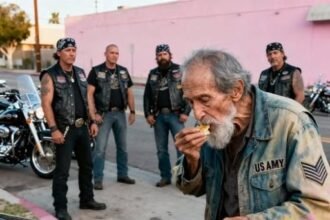⬇️⬇️
Continue reading below
evening, instead of heading straight home, he drove to the local park where families often gathered. Sitting on a bench with Hope by his side, he watched as parents pushed their children on swings and elderly couples strolled along the paths.
An idea began forming in his mind – one that might address both Mrs. Thompson’s concerns and preserve the positive impact Hope was having on the community.
The following week, Marcus presented a proposal to both the police chief and the neighborhood association. Rather than continue unofficial patrols, he suggested establishing a formal Community Connection Program centered around Hope.
The initiative would include regular visits to schools, nursing homes, and community centers, along with structured neighborhood walks where residents could interact with both officer and dog in safe, controlled environments.
Mrs. Thompson initially balked at the suggestion, but when Marcus invited her to witness one of these interactions firsthand, something unexpected happened. During a visit to the local senior center, she watched as Hope helped a non-verbal dementia patient smile for the first time in months.
Another resident, known for his gruff exterior, tearfully recounted how Hope’s presence reminded him of the dog he’d lost years ago. By the end of the hour, even Mrs. Thompson’s rigid stance had softened considerably.
Within months, the program expanded beyond anyone’s expectations.
Other officers began volunteering their time to participate, bringing their own pets or working with trained therapy animals. The neighborhood association, led by a noticeably warmer Mrs. Thompson, organized fundraising events to support the initiative.
Local businesses donated supplies, and a nearby veterinary clinic offered free check-ups for participating animals.
Hope herself became something of a legend, inspiring similar programs in neighboring communities. Yet perhaps most remarkably, the initiative achieved what traditional policing methods had struggled with for years: building genuine trust and communication between law enforcement and the community they served. Crime rates dropped as residents felt more comfortable reporting suspicious activity, knowing they could approach officers without fear.
Looking back on that fateful night behind the dumpster, Marcus realized the greatest lesson came not from what he did for Hope, but what Hope taught him about service and connection.
Sometimes, the smallest acts of kindness create the biggest ripples of change. The abandoned puppy who melted his heart ended up transforming an entire community’s understanding of what it means to protect and serve.
If this story touched your heart as much as Hope touched her community, please share it with others. Let’s spread the message that compassion can be our strongest tool for creating positive change.
And if you’ve experienced how an unexpected act of kindness transformed a situation, leave a comment below – we’d love to hear your story too!




